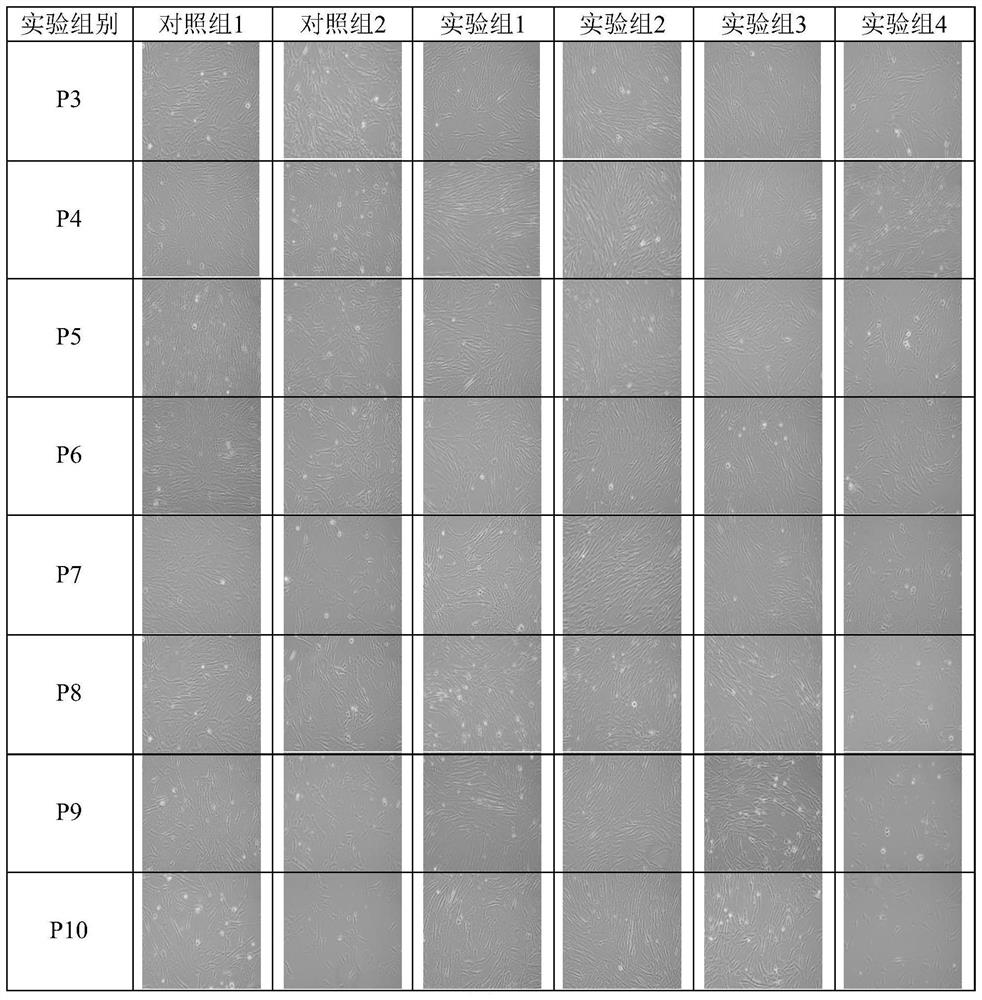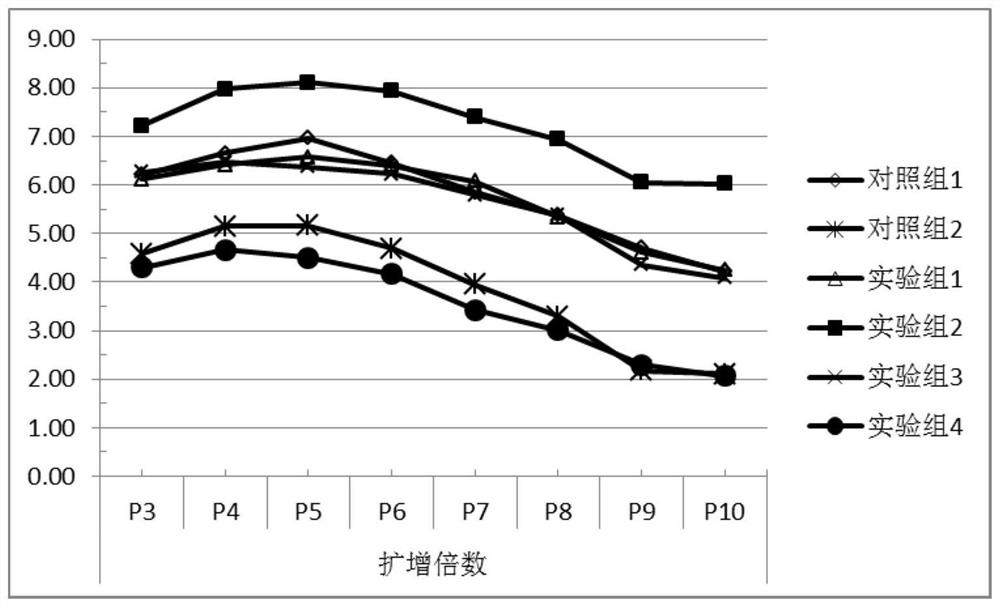Serum-free medium (SFM) and application thereof in mesenchymal stem cell (MSC) subculture
A medium and stem cell technology, applied in the field of stem cell culture, can solve the problems of insufficient passage and expansion ability, and achieve the effect of improving mesenchymal stem cell passage and expansion ability, maintenance of cell stemness, and good expression
- Summary
- Abstract
- Description
- Claims
- Application Information
AI Technical Summary
Problems solved by technology
Method used
Image
Examples
Embodiment 1
[0037] The components of the serum-free medium include:
[0038] Table 1 Serum-free medium components of each group
[0039]
[0040]
[0041] Each component was dissolved according to its respective solubility characteristics, sterilized by filtration through a 0.22m filter membrane, added to the basal medium and mixed evenly, and then penicillin and streptomycin were added to a concentration of 1 vol%.
Embodiment 2
[0043] The serum-free medium of Example 1 was set as the experimental group, the complete medium containing 10% FBS was set as the control group 1, and the MesenCult-XF Medium of BI Company was set as the control group 2, and the following experiments were carried out.
[0044] 1. Morphological observation and activity detection of UC-MSCs serially passaged
[0045] Select the P3 generation UC-MSCs to carry out the experiment, passage every 3-4 days, and the UC-MSCs are all divided into 1×10 5 The amount of cells per well was seeded in a six-well plate, and each group was set up with 3 replicates. placed in 5% CO 2 Culture in an incubator at 37°C. The image of UC-MSCs was collected before each passage, and the cell morphology (100×) was as follows figure 1 shown.
[0046] Table 2 The cell count results of each generation of UC-MSCs activity detection in each group
[0047]
[0048] Note, ** indicates that there is a very significant difference compared with the control...
Embodiment 3
[0053] Example 3 Detection of UC-MSCs surface markers
[0054] UC-MSCs were inoculated in T25 culture flasks at a density of 1×104 / cm2 and cultured at 37°C in a 5% CO2 incubator. After 3 days, 0.25% trypsin solution digested and collected UC-MSCs in each group, according to the MSC surface marker standard (positive markers CD105, CD73, CD90 expression rate ≥ 95%, negative markers CD34, CD45, HLA-DR expression rate ≤ 2%), the surface markers of UC-MSCs of different passages in each group were detected by flow cytometry. The results are shown in Table 3.
[0055] Table 4 Detection results of markers on the surface of UC-MSCs in each group of P5 generation
[0056] Experimental group CD105 CD90 CD73 CD34 CD45 HLA-DR Control group 1 98.98% 100.00% 100.00% 0.03% 0.00% 0.02% Control group 2 97.75% 99.98% 100.00% 0.21% 0.10% 0.04% Experimental group 1 98.35% 99.99% 100.00% 0.03% 0.03% 0.02% Experimental group 2 99.87% 10...
PUM
 Login to View More
Login to View More Abstract
Description
Claims
Application Information
 Login to View More
Login to View More - R&D
- Intellectual Property
- Life Sciences
- Materials
- Tech Scout
- Unparalleled Data Quality
- Higher Quality Content
- 60% Fewer Hallucinations
Browse by: Latest US Patents, China's latest patents, Technical Efficacy Thesaurus, Application Domain, Technology Topic, Popular Technical Reports.
© 2025 PatSnap. All rights reserved.Legal|Privacy policy|Modern Slavery Act Transparency Statement|Sitemap|About US| Contact US: help@patsnap.com



